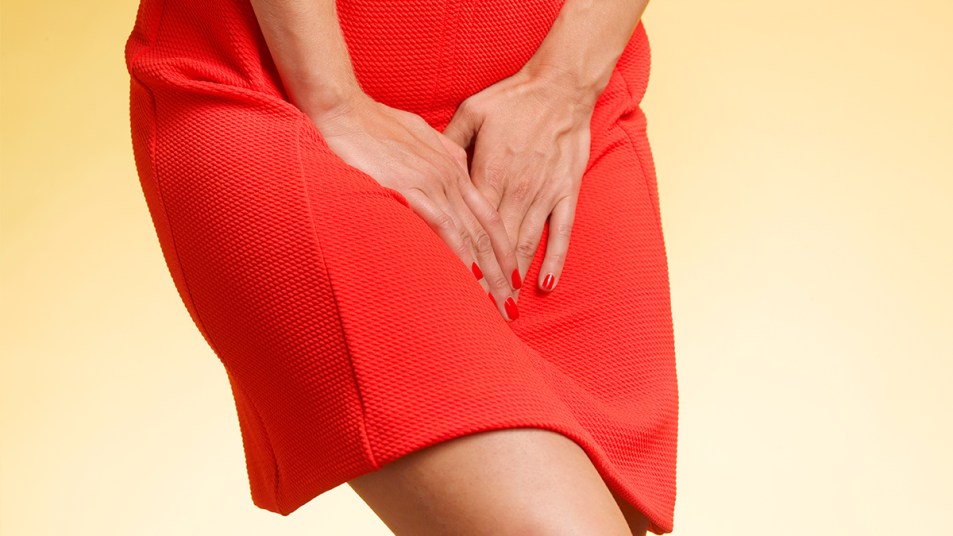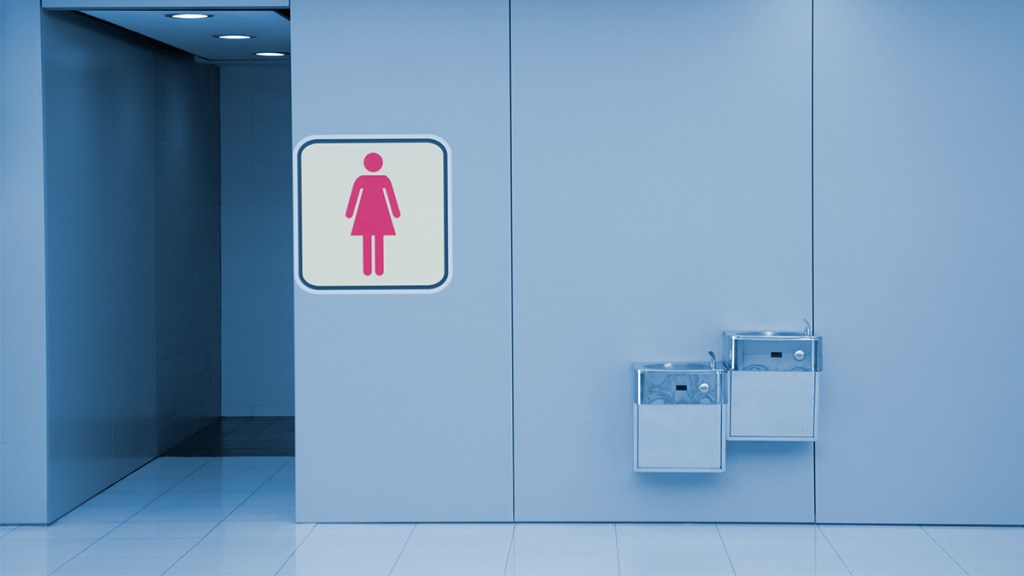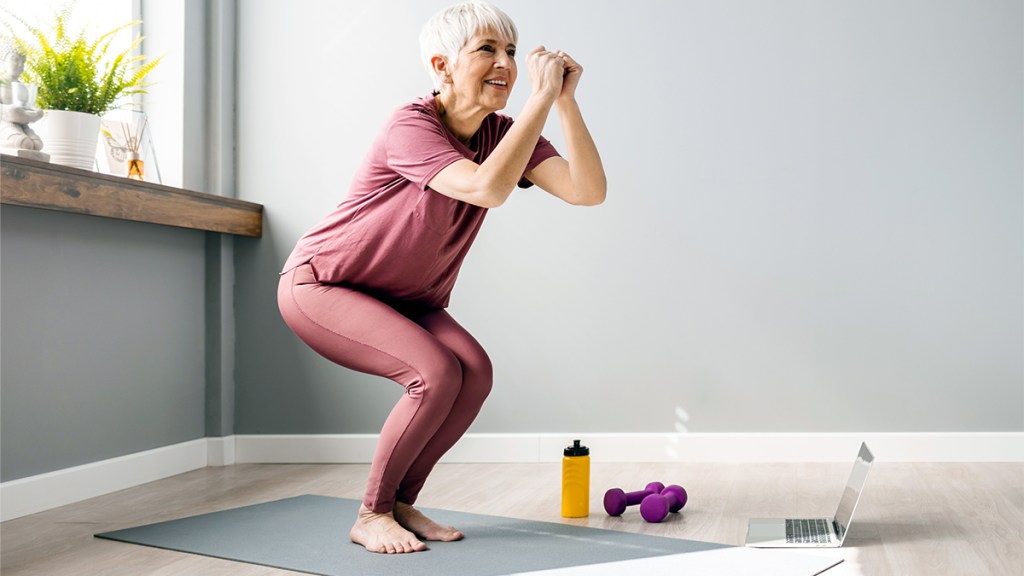Top MDs: Common Prescription Medications Cause Bladder Leakage — How to Get Relief
Many women are told leaks are a normal part of aging, but that's just not true. Plus, how kegels can make the problem *worse*

Whether your doctor put you on medication to lower your blood pressure or you simply took Benadryl to battle allergy symptoms, there could be an unwanted side effect: bladder leakage. In fact, diuretics, alpha-blockers, ACE inhibitors, muscle relaxants and even over-the-counter antihistamines are all meds that cause bladder leakage — something you definitely didn’t bargain for when you took the medicine to protect your heart or clear your congestion.
The challenge? Most people don’t suspect that a medication can play a role in incontinence, says Jewel Kling, MD, women’s health specialist and assistant director of Women’s Health at the Mayo Clinic in Phoenix, Arizona. One reason? Many of these medications are more commonly prescribed to adults over age 50, the very age demographic that are told to expect incontinence as a normal sign of aging. In fact, a study in the journal BMC Geriatrics found that 60% of older adults who seek their doctor’s help for incontinence are on a medication that may be contributing to the problem.
“Most people aren’t going to associate incontinence with a medication they may be taking,” Dr. Kling observes. “And because so many of my patients are older women, I’d be remiss if I didn’t say genitourinary syndrome of menopause (GSM) is a major contributor to bladder and genitourinary symptoms of post-menopausal women. So if they’re not being treated for GSM, they may be at a higher risk of noticing this side effect from these medicines.” (Click through for more info on GSM, including a feeling that your vagina has gotten smaller, and how to handle it).
Incontinence basics
“There are three types of incontinence: stress, urge and overflow,” explains Dr. Kling. “Stress incontinence is all about the pelvic floor not being strong enough to hold in the urine.” So a weak pelvic floor allows for leaks when a person laughs, coughs, sneezes or picks up heavy objects, all of which place pressure on the bladder. Urge incontinence is when your bladder is full and you get the urge to pee, but you leak before you can reach the bathroom. People with overflow incontinence, on the other hand, experience the urge to urinate but are only able to release small amounts of liquid, she says. This allows the bladder to get too full, so it leaks urine even when there’s no urge to go.
Common meds that cause bladder leakage
Antidepressants
Some psychotropic medications, including antidepressants such as SSRIs, or Selective Serotonin Reuptake Inhibitors (think Prozac, Paxil and Lexapro) and SNRIs (serotonin and norepinephrine reuptake inhibitors) like Cymbalta, Effexor and Pristiq can cause dysfunction in the urethral sphincter, the valve that helps keep urine from leaking from the urethra, she says. This can trigger stress incontinence. “These are not common associations most people will make. I wouldn’t think to myself, you’re starting me on an antidepressant and I may experience incontinence as a side effect,” says Dr. Kling. “So it’s important for people to know that if they start any of these medications and have this side effect, it could be related.”
Blood pressure medications
Diuretics, ACE inhibitors, calcium channel blockers and alpha blockers, all prescribed for hypertension, can trigger bladder leaks, but for different reasons, says Dr. Kling. Here are a few specifics:
ACE inhibitors. Meds like Lotensin, Vasotec and Zestril can cause chronic cough as a side effect. “A chronic cough is going to worsen stress incontinence,” says Dr. Kling. Click through for a complete list of ACE inhibitors.
Diuretics. In addition to treating hypertension, these medications, including Lasix and Zaroxolyn, are also used to treat edema, and they work by helping the body produce more urine, Dr. Kling says. (Click through for more on how to ease edema, or swollen ankles.) More urine means more trips to the bathroom. For this reason, she adds, the drugs can trigger both urge and overflow incontinence, since the bladder is more likely to be full more often. “If you’re having more urges to urinate, then you’re probably going to notice more incontinence.” Click through for a complete list of diuretics.
Calcium channel blockers. These meds, like Verelan and Norvasc, prevent calcium, which causes the heart and arteries to squeeze harder, from entering cells of the heart and arteries. But they also cause the bladder to relax, so it can’t contract to properly empty. Click through for a list of calcium channel blockers
Alpha blockers. Although they are very effective for lowering blood pressure by dilating blood vessels, medications like Flomax and Cardura can also relax the bladder and urethra, allowing urine to leak, says Barbara DePree, MD, a certified menopause practitioner and founder of MiddlesexMD.com. Click through for a list of alpha blockers.
Cold and allergy medications
First-generation antihistamines (the ones that make you sleepy) like Benadryl relax the bladder, so it can’t expel all of the urine it contains, explains Dr. Kling. When that happens, overflow incontinence can result. What’s more, decongestants like Sudafed can cause stress incontinence because they overtighten muscles that control urine flow.
Medications for overactive bladder
Levsin, Vesicare and Ditropan are in a class of drugs called anticholinergic medications, and they’re used to treat conditions like overactive bladder, where the bladder is ultra sensitive and sends “gotta go” messages to the brain even when the bladder isn’t full. The medications help calm that urge, but ironically, they can also cause leaks, says Dr. Kling. “They decrease the bladder’s contractility, so it’s not able to contract to hold urine in, and leaks can result.” Click through for a list of anticholinergic medications.
Muscle relaxants
Used to treat acute pain as well as conditions such as multiple sclerosis, cerebral palsy and others, muscle relaxants like Soma, Flexeril and Robaxin can also cause leaks. “The medications are not only relaxing skeletal muscles, but they’re relaxing muscles like the bladder that can lead to urinary incontinence,” says Dr. Kling. Click through for a list of muscle relaxants.
What to do if your medication is causing leaks
“If someone is having incontinence as the side effect of a medication, they should consider transferring to another medication, if possible,” says Dr. Kling, adding that physicians often have several options when treating conditions like blood pressure, pain or depression. “The key is having an ongoing conversation with your clinician to be sure the medication is the cause and to ensure this gets addressed.” Here, a few simple strategies to outsmart bladder leaks caused by medications. (Click through for more natural incontinence remedies.)
Consider estrogen therapy
If GSM is the main cause of your incontinence but a medication may be exacerbating that symptom, treating the GSM may alleviate the issue, says Dr. Kling. Low-dose vaginal estrogen and vaginal DHEA are the standard treatments here that can be discussed with your doctor. “I often suggest use of a cream because you can also apply it directly to the urethra.” Why that’s key? Loss of estrogen doesn’t only trigger vaginal symptoms, it can also impact the urethra to trigger leaks. But applying the low-dose topical estrogen to the urethra can stop this problem.
“Vaginal estrogen is extremely safe,” Dr. Kling assures. “It doesn’t cause increased risk for heart attacks, stroke or breast cancer and it can be continued indefinitely. Not only does it help with menopause symptoms like pain during intercourse, but it brings urinary benefits too, like reducing urgency and urinary tract infection risk.
Cut back on these drinks
“Things like alcohol and caffeine can worsen incontinence, especially if you’re on one of these medications that may put you at risk,” Dr. Kling says. “Alcohol would decrease bladder muscle contractility and can act as a diuretic. And caffeine increases contractility, so the bladder is contracting and sending messages to brain to increase the rate of bladder emptying.” That’s why Dr. DePree suggests her patients make beverages with caffeine and carbonation an occasional treat. “Both are proven bladder irritants, triggering spasms that can lead to urge incontinence.”
Train your bladder

“If someone has overactive bladder that causes leaks and their medication is triggering that, the idea of bladder training can be very helpful,” Dr. Kling says. With bladder training, you schedule bathroom visits for specific times daily, then use a distraction technique if you get the urge to go before one of these trips. “You have to think of it as mind over bladder. As long as you’re making sure you’re using the restroom several times a day, you have to help your mind recognize that you don’t actually have to run to the bathroom.” Many women inadvertently train their bladder in the wrong direction, adds Dr. DePree. “In an attempt to prevent future leaks, it’s common to use the bathroom ‘just in case’ when you don’t really need to.” This teaches the bladder to feel fuller sooner, leading to strong urges that are harder to hold in.
For stress incontinence, try Kegels or Pilates

Kegels are a go-to for stress incontinence, and they work well for that because they strengthen the pelvic floor. To do a Kegel, Dr. DePree advises squeezing the muscles you use to hold in urine and holding for a count of three, then relaxing for a count of three. Repeat 10 to 15 times a day. Tip: Time spent driving is a great time to do Kegels.
If the thought of doing Kegels is not appealing, consider Pilates exercises like lunges, squats and hovers (find an easy Pilates workout here). A study in the Research Journal of Pharmacy and Technology found that they activate pelvic floor muscles more effectively than Kegels. What’s more, a Mayo Clinic study reveals that women in a 12-week Pilates program improved urinary incontinence symptoms by 44%.
For urge or overflow incontinence, relax the pelvic floor
The drawback to Kegels and other methods to strengthen the pelvic floor? So many women think they’re the incontinence cure-all, says Dr. Kling. But if you have urge or overflow incontinence and start doing Kegels, you’re not treating the underlying mechanism, she asserts. “A lot of women have hypertonic muscles, and Kegel exercises will make this worse, so they aren’t the answer to all forms of incontinence.”
If tight pelvic floor muscles are contributing to your leaks, Dr. DePree advises simple exercises designed to relax the pelvic floor. First, try lying on your back and bringing your knees to your chest, then opening your knees, reaching through to grab toward your ankles or shins. In this position, take long, deep breaths, focusing your breath into your abdomen and pelvis. And when you’re sitting watching TV, driving your car or lying in bed, try making this a habit: Take deep breaths and release your pelvic floor muscles — that same feeling as when you sit on the toilet and relax before you urinate (don’t worry, you won’t leak urine while doing this). Let your chest, rib cage, belly and pelvic floor muscles expand as you inhale, then exhale gently. Repeat this slow breathing for two to three breaths.
Click through for more ways to outsmart incontinence:
Everything You Need to Know About Urinary Incontinence — And How to Beat It
Doctors Weigh In on The Best Natural Solutions for Female Bladder Problems
Incontinence? Dr. Jennifer Levine Shares Non-Invasive Core-to-Floor Protocol
A version of this article originally appeared in our print magazine, First for Women.
This content is not a substitute for professional medical advice or diagnosis. Always consult your physician before pursuing any treatment plan.













